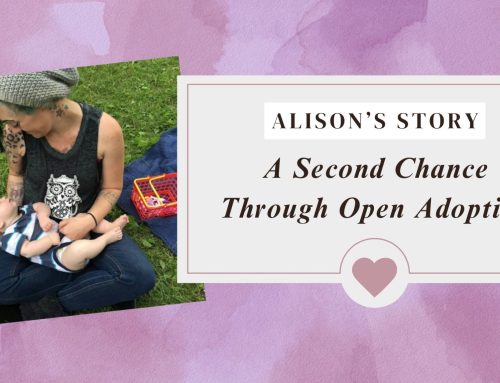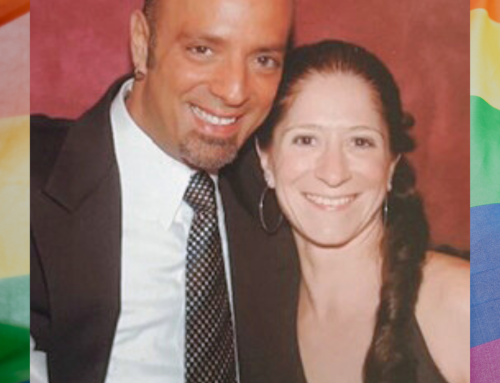This episode of Heart-To-Heart with Adoptions From The Heart features Keri Friedman and Jennifer Conn. Keri is a Chinese adoptee who will soon be graduating college with a degree in Psychology and is currently interning at Adoptions From The Heart. Jennifer is a Korean adoptee who works with adoptees and families as a licensed social worker and child and family therapist. She also serves on the AFTH Board of Directors. The discussion ranged from highlighting some of the generational differences among Asian adoptees to the many aspects of their similar experiences, including challenges relating to transracial adoption, confronting the globalization of Western beauty standards, and shaping their identity over time.
Learning of Adoption
Keri grew up with the knowledge she was adopted. Her family kept the conversations on adoption open, allowing Keri to grasp the concept from an early age. She is a transracial adoptee. Her adoptive mother is Taiwanese, and her adoptive father is Caucasian. She has a sister, who is the biological daughter of her parents. Keri believes having her around also helped her understand she was adopted, not that it impacted their loving relationship in any way.
Jennifer was transracially adopted into a Caucasian family. She knew from an early age just by looking at her parents and her older three siblings that she was adopted. Her parents did talk about the circumstances of her adoption. She was adopted around two years old.
Introducing Race to an Adoptee
Jennifer mentions that children by the age of 10 months can start understanding the idea of race. They see they don’t look like some of their other family members if they were transracially adopted. Many of these adoptees are adopted into fully Caucasian families, so they fully understand the physical differences in appearances by the age of three.
When Keri would ask about her background, her parents wouldn’t have much information to give her. They knew she had been placed at an orphanage in China and stayed there for about 11 months. Other than that, there’s not much more her parents could tell her about her life before being adopted.
Documentation for Older Generation’s Adoptees
Jennifer notes that she is from a different generation from Keri. The documentation from her age was much less reliable than that of the current generation. In her generation, she knows of many people who have traveled back to where their paperwork claimed they were from, only to find out the information was made up or untrue. In addition to the trauma caused by being adopted, finding out that the story shared with them is untrue can become another source of trauma.
Many adoptees want to feel connected to their adoptive families and suppress any other information or urge about their biological families. At some point, the adoptees who feel secure enough to look can find themselves with that second trauma if their information is inaccurate.
Jennifer grew up distrustful of her papers. The paper contained her biological mother and father’s names and the situation that led to placing her at the Korean orphanage. She never knew for sure if it was accurate information until she went to the orphanage and spoke with a social worker who’d been there for about 30 years. The social worker was able to confirm that the information was accurate.
DNA Testing
Keri never did any DNA testing to find more information about her biological family; however, she knows of a friend who did. Her friend tried 23andMe, and it showed her where she is from and where she has some relatives. It didn’t trace to her specific individuals or deepen her understanding of her adoption or origin story.
On the other hand, Jennifer did try 23andMe because her son was curious about her genetic makeup. She found out she’s 99% Korean, which she found fascinating compared to other Korean adoptees. Many of them found they also had a large amount of Japanese DNA due to the Korean War and Japanese occupation. 23andMe told her she was from a farming region, and most likely, the family had been there for a long time. She never found individuals, but she is content with that. As it is, she already has a very large family.
There is a DNA bank in Korea, so a person can put their DNA through the system, and it can try and match you with people in Korea. Jennifer knows of some people who found this to be very successful.
Growing Up as an Adoptee
Jennifer
Jennifer grew up in the ’70s and a predominately white region outside of Philadelphia. In school, she was one of few Asian children, and there were also a very small number of African American and Hispanic students. This caused Jennifer to not identify with other people of color; instead, she identified with white people. Although her community wasn’t as diverse as she needed, her family understood she needed to be in touch with her culture.
Her family showed her at a young age, they knew she wasn’t Caucasian, and they didn’t expect her to be a white child. Her parents exposed her and her siblings to many cultures throughout her childhood, taking them on trips and visiting museums. When she was older, they even offered to send her on a trip to whichever part of Asia she wished. Like many adoptees, she didn’t seek out her culture until she was older.
Jennifer advises parents to keep putting effort into their child’s culture. Even if the child doesn’t seem interested, the offer still shows the child they care. This will make the child feel the parents are open and willing to communicate on the subject. It’s not taboo or discouraging. Jennifer said, “being able to grow up with that open-mindedness towards diversity has really helped me in my own racial identity.” She grew up making diverse friendships. Today, she is married to a Latino man, and together they have a biracial son.
Keri
Since Keri’s mother is Taiwanese, there was more push to be connected to their culture. Keri and her sister went to Chinese school on Saturdays. They grew up in Nashville, which had a strong Asian community with immigrants and other Chinese adoptees. This allowed Keri to feel connected to her heritage. She felt proud of her Asian identity and felt secure in a community where she didn’t stand out because of her race.
There was some disconnect as some of the children her age were immigrants and spoke fluent Chinese and were confused that Keri wasn’t. She found herself explaining she was Chinese and was in the process of learning the language since she was adopted. With a multi-cultural family, English is their predominant language.
Western Beauty Standards
The idea of western beauty standards became more apparent as social media apps grew in popularity. Asian adoptees struggle with self-esteem because they don’t see people who look similar to them in pop culture and the media. Jennifer feels there is an invisibility factor for Asians that aren’t as bad for other minority groups. The idea of beauty can become very distorted when an adoptee’s family doesn’t look like them. A transracial adoptee may see their Caucasian mother as beautiful and struggle to see herself as beautiful because they don’t look similar.
Today, Jennifer sees more Asians in pop culture, which is a great thing. She took her son to see Crazy, Rich Asians because she wanted him to see a strong Asian male lead and a movie revolving around Asian people and culture. When she was growing up, she doesn’t remember any movies like that.
Keri agrees she struggled with the beauty standards and felt she didn’t exactly fit in. She had mirrors in her family with her mother and sister, and her father constantly affirmed how beautiful she was. Despite this, she saw the difference between herself and the girls at school. She found herself wishing she had lighter eyes and skin and even considered dying her hair blonde. Traveling and following social media accounts that provided more mirrors helped Keri feel more secure in her own body.
World vs. Self Viewpoint
Jennifer talks about many Asian adoptees struggling with how they look compared to family members and community members. There is a feeling of feeling less than. On the other hand, there is the fetishization of the Asian female. They are looked at and exoticized by the media. Racism and sexism go hand-in-hand with people commenting on Asian female’s appearances. The Atlanta shooting displayed the stereotyping that Asian women face.
When Jennifer went to Korea, she realized how commonplace plastic surgery is, especially double-eyelid surgery. So not only are beauty standards prevalent in the United States, but it also affects countries around the world like Korea. Keri agrees that the beauty standard is globalized as she saw people in Taiwan lightening their skin, taping their eyelids, and putting in light-colored contacts. She thought she’d feel more comfortable being in Taiwan surrounded by mirrors but was surprised they adhered to similar beauty standards she saw in the United States.
Common Themes in Adoptees
Through all the different adoptees Jennifer worked with over the years, most wanted to assimilate to their new families and cultures. This resulted in many adoptees from the older generation suppressing their identities. The younger generation of adoptees has more access to culture. However, they still want to look like the people around them and to fit in.
Another common theme is feeling confused about their adoption. Adoptees grow up being told they are lucky to be adopted, and they feel special. Then dissonance comes in when other people start questioning the adoptees about their background. They are asked why they were adopted. This can make it hard for adoptees to form an identity and feel secure in it. The journey is unique to each adoptee.
Adoptee Views on Adoption
Keri found comfort in learning about the political climate in China around the time she was born. It helped her find a possible reason as to why her biological parents placed at the orphanage. Now that she works at AFTH, she knows more about how adoption works. Learning about birth mother, adoptive parent, and adoptee stories allowed her a more extensive viewpoint into the adoption world. She now looks at adoption as more than just an adoptee. She identifies as an advocate for adoption.
Jennifer’s view on adoption changed over the years. Her personal experience with adoption was positive, not perfect. The most important thing is having a strong connection with a loving family. This isn’t solely for biological families or adoptive families. It takes work and energy to build and maintain the relationship. She said, “It’s not about adoption sometimes. Sometimes, it’s just about the environment you are lucky enough to grow up in and how much love and support you get.” She knows the transracial and international adoptions are so complex, but she is an advocate for adoption. She advocates for families to be educated and understand how to support a transracial adoptee.
To listen to the podcast, go here.
To read some of our recommended adoptee resources, go here.




